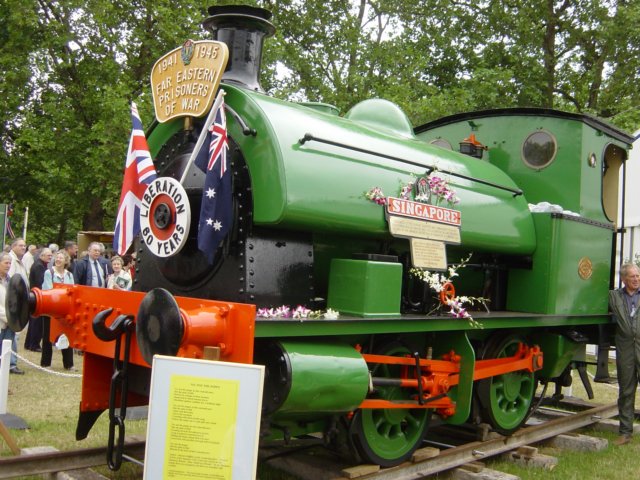

Source of the following text: www.news.mod.uk
The "Singapore" was built in Newcastle and sent to the Royal Dockyard at Singapore. The locomotive has a unique wartime history in the Far East having been captured by the Japanese in 1942 at the fall of Singapore, a fate it shared with 80,000 allied servicemen. Like its fellow prisoners, the locomotive was also put to work by its captors in the naval dockyard, servicing Japanese ships.
There were two prisoners of war at the ceremony today, the locomotive and Dennis Griffiths a Japanese POW in Burma between 1942 -45 who wrote a poem "No, Not the Poppy" which commemorates the allied servicemen who lost their lives fighting or as prisoners of the Japanese. In Thailand, no poppies grow, so the wild orchid was chosen as a symbol just as potent and powerful as the poppy is for other service men and women.
In the spring of 1942, 60,000 allied Prisoners of War were taken to Siam where they were involved in the construction of the infamous Burma-Siam "Railway of Death" through the disease-infested jungle. With little medicine available, poor diet and unrelenting hard labour in all weathers, more than 16,000 prisoners of war died along with more than 100,000 native workers as the Japanese relentlessly pushed the 250 mile railway to completion with little regard to human life.
Only the dropping of the atomic bomb and Japanese surrender saved the surviving prisoners from certain death. The locomotive is now maintained at the Rutland Railway Museum near Cottesmore as a working memorial to the sacrifice, and comradeship of Far Eastern Prisoners of War.
Created with Web Album Generator